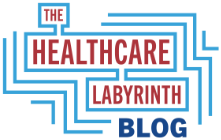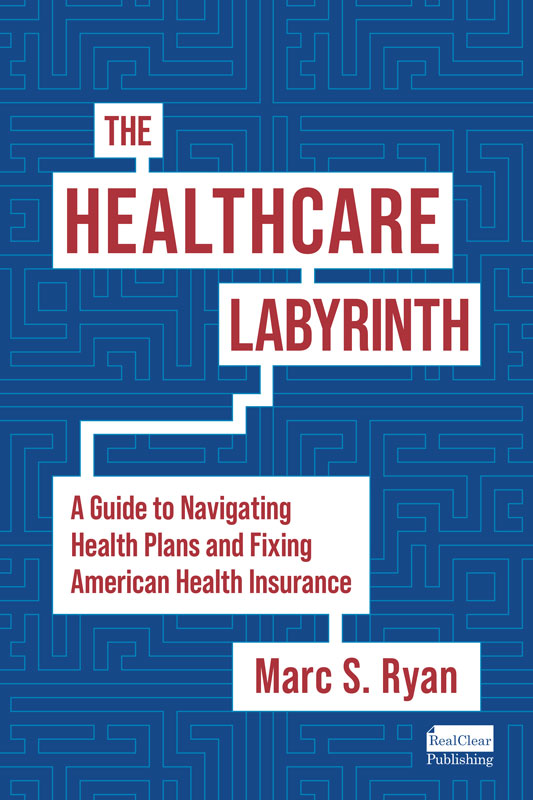In my February 1, 2024 blog, I walked you through the Advance Notice from the Centers for Medicare and Medicaid Services (CMS) regarding proposed Medicare Advantage (MA) rates for calendar year 2025. Many health plans and industry-friendly trade groups lobbied CMS hard for a change in the proposal. Even lawmakers got into the game. But the final notice came out this week and almost nothing changed on the rate front.
On February 1, I told you that MA plans were very worried about the proposed 2025 rate because of a series of negative trends that were hitting them:
- Rising utilization and medical expense
- A new prior authorization rule (effective 1/1/2024) that will tie their hands and further drive up costs
- A new Risk Adjustment Data Validation (RADV) rule that exposes the industry to huge recoupment risks
- Poor Star achievement scores that cut their bonus revenue
So let’s take a look at what happened between the Advance Notice and the Final Notice of 2025 MA rates.
| 2024 and 2025 Medicare Advantage Rate Comparisons | |||
| 2024 Final | 2025 Proposed | 2025 Final | |
| Effective Growth Rate | 2.28% | 2.44% | 2.33% |
| Changes in Star Revenue (Overall) | -1.24% | -0.15% | -0.11% |
| Rebasing | 0.00% | TBD | 0.07% |
| Coding Pattern Adjustment | 0.00% | 0.00% | 0.00% |
| Risk Model Revision and Normalization | -2.16% | -2.45% | -2.45% |
| Increase Without Risk Score Trends | -1.12% | -0.16% | -0.16% |
| Anticipated Risk Score Trends | 4.44% | 3.86% | 3.86% |
| Increase with Risk Score Trends | 3.32% | 3.70% | 3.70% |
In the end, there were a few cosmetic changes between the two notices that netted out to the same outcome – a negative 0.16% reduction in rates from 2024 to 2025 without risk score trends and a 3.70% increase in rates from 2024 to 2025 with risk score trends.
The big thing impacting the 2024 and 2025 rates is the phase-in of a risk adjustment coding change over a 3-year period (a third each year). This negatively impacts revenue and we will see this again in 2026. See more on this in the explanations at the end of the blog.
As I noted on February 1, MA plans do not believe that risk score trends should be counted in the rate calculation. Plans view this as a recognition of increased risk from year to year. Opponents point to major overcoding in the MA program and argue all or the vast majority of the trend is new revenue each year. As I always say, the truth is probably somewhere in the middle. For the sake of argument, if you halve the risk score trend (allowing for some real new risk as well as ongoing overcoding), that still only gives plans a net increase of about 1.8%. That is still too little for plans to grapple with all the changes noted above. For a more in-depth discussion of the risk score trend controversy, go to the Advance Notice Blog: https://www.healthcarelabyrinth.com/2025-rates-for-medicare-advantage-plans-look-tight/
So, here is a quick chart to show all of what plans are up against in 2025 and how it means a similar trend from 2024 (which has just started!). Remember that this is my assessment of the industry as a whole. Each individual plan will perform differently based on their benefits, Star scores, and financial performance.
| 2022 | 2023 | 2024 | 2025 | |
| Star scores (score impacts the following calendar year revenue) | Very High (impacts 2023 revenue) | Coming down (impacts 2024 revenue) | Low (impacts 2025 revenue) | Announced in October 2024 |
| Rates | Very High | High | Low | Low |
| Medical Expense | Rising | Rising | Expected High | Expected High |
As you can see, 2022 and 2023 benefited from high rates and better Star scores. While utilization was beginning to hit again, plans did pretty well. In 2024, revenue was impacted by Stars coming down and a low rate increase. In 2025, revenue will be impacted by low Star scores and low rate increases.
What’s more, it appears that margins were coming down even prior to the latest downturns in Star and rate revenue. A recent report from Moody’s Investors Service finds that MA margins overall dropped from 4.9% in 2019 to 3.4% in 2022. This could have been caused by added benefits; some medical expense increase caused by inflation, utilization, and new membership; and plans that did not execute as well (players big and small). The poor Star, lower rates, and major utilization increases had not really reared their ugly heads yet. Imagine what the industry could be in store for.
The CEO of Clover Health, Andrew Toy, came to the defense of CMS on the final rate announcement. I understand what he was doing. He essentially was saying some reform needs to occur in MA rate-setting. I have taken that position overall, arguing more accountability in how MA plans spend money and generate revenue (including risk adjustment practices). I have even said the day will come when MA rate-setting must be divorced from the inefficient FFS program. And, as I have alluded to, some of what the industry is going through is its own fault, including poor execution on Stars, over-expansion, benefit packages that were not sustainable.
All that said, I still think the rates generally will be a negative for plans and it comes at a difficult time. While some plans with good Star scores or have otherwise planned for a downturn in revenue increases may see less impact, much of the industry is reeling from the execution issues, the PA change, and rising medical expense with the return of utilization. The negative news on rate increases just compounds what was expected to be a tough 2024 and 2025.
What will happen? The fact is many plans have been living with benefit packages they likely could not afford in good times and absolutely cannot afford now. You will see a fairly major contraction in benefit offerings in 2025 as plans try to get back to expected profitability. Simply put, the “juicing” of benefits we have seen when rate increases and Star scores were fairly generous will have to go away to some degree. And that is not a terrible thing.
How much the benefits will erode is really dependent on how heavy utilization and inflation look to plans in the next few months as well as how much the new PA rule is impacting medical expense. Some plans may seek to pull back less on benefits than they should in order to maintain enrollment and be competitive. But some of the larger players – public ones especially – could move to very much realign benefits given collapsing stock prices. They need to send a positive signal to Wall Street.
As I say, MA will continue to grow as the value will still be there when compared with the traditional fee-for-service (FFS) program. But those on low and fixed incomes will see their critical safety net erode.
I repeat the explanations below from the February 1, 2024 blog for everyone’s convenience.
- The effective growth rate (EGR) is derived from the growth in the per capita costs in the traditional FFS program. Remember that the eventual county benchmarks are adjusted from there based on several parameters, including whether a county is at 95% up to 115% of FFS costs.
- Star revenue changes are a global estimate as well. Each plan will have a different result based on its actual Star performance by contract and eligibility for bonus revenue. Those losing bonus revenue can see a much bigger year-over-year reduction in revenue. Those maintaining Star could see additional revenue due to enrollment growth. Those gaining bonus revenue for the first time would see a great jump. The negative number for Star revenue is a sign that program-wide plans lost Star power and 4 Star or above Star ratings of late.
- Rebasing relates to changes in the average geographic adjustment index (GAI), which adjusts for spending differences across regions/counties. This usually is a small impact. The rebasing could be positive or negative in a given year and actual impacts are really seen at the local county or regional level. The rebasing number simply reflects the nationwide impacts of changes in the GAI.
- The coding pattern adjustment is a statutory/regulatory reduction taken to MA rates for the perceived differences in risk scores between MA and FFS. This gets to the controversy about whether MA plans over-score members. You know my thoughts on this – it is a bit of a mixed bag in my opinion. The coding intensity adjustment has been set at negative 5.91% for years now and CMS has not yet changed it, despite pressures from critics who say over-reimbursement has risen well beyond that negative factor.
- There is the normalization factor adjustment captured within Risk Model Revision and Normalization. The normalization factor ensures the average risk score stays at 1.0 and adjusts from the data year in the model to the payment year. This is different than coding intensity.
- The risk model change is responsible for the biggest impact in the Risk Model Revision and Normalization category. In 2024, CMS announced it was updating the risk model and made many major changes, including:
- Condition categories are restructured from ICD-9 to ICD-10.
- The underlying FFS data years are revised.
- There are some revisions focused on reducing the sensitivity of the model to conditions with more coding variation and that has generated some controversy.
- The new model should reflect more current costs associated with various diseases, conditions, and demographic characteristics. Average risk scores may change over time in FFS.
- In a concession to plans in 2024, CMS decided to phase in the new risk model change by using one-third in 2024, two-thirds in 2025, and 100% in 2026.
- In general, when fully phased in, the risk model change will reduce revenue by up to 7% (including the normalization factor, which goes hand in hand with the calculations here). This is the biggest issue plans have – the risk model change is zeroing out the effective growth rate increase. Without taking into account the normalization factor, the impact is higher.
- As I noted, the anticipated risk score trend is a national number calculated by CMS. Individual plans will see various increases or decreases. There is concern about the updated risk model’s impact on dually eligible individuals in MA. CMS said it computed the expected risk score trend for dual eligibles at 4.33 percentage points higher than for non-dually eligible individuals.
#medicareadvantage #rates #payments #2025
— Marc S. Ryan





